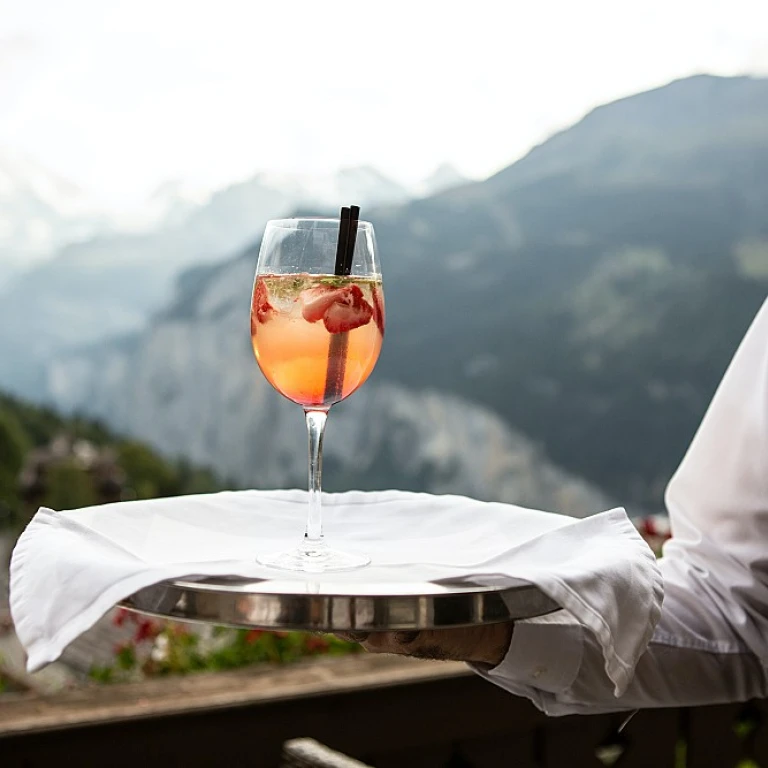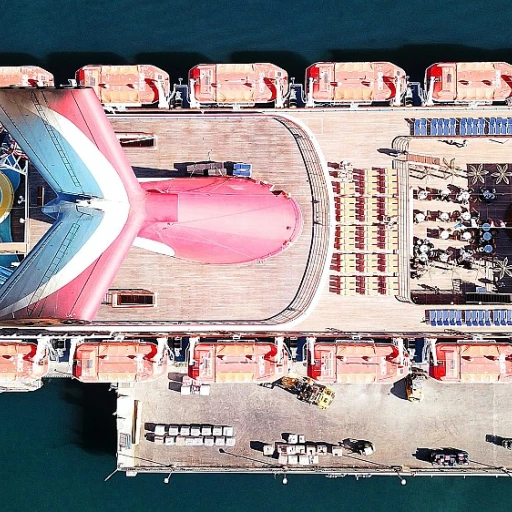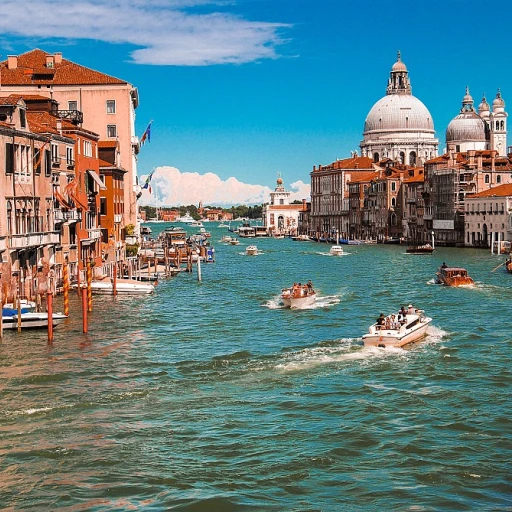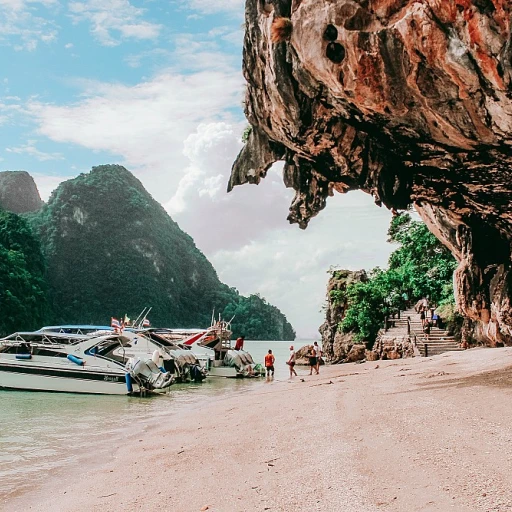The perfect time to visit for top of the rock photos
Finding the right moment for breathtaking photos
Capturing the perfect top of the rock photos isn’t just about finding a great angle or having the best camera. Timing plays a huge role. The best time to visit the Top of the Rock for stunning photos is usually during the golden hours - just after sunrise or right before sunset. Why? Well, the city skyline of New York is bathed in soft, warm light that brings out the beauty of the skyscrapers, providing ideal conditions for capturing rich, vibrant images.
It's no surprise that professional photographers recommend visiting early in the morning or late in the afternoon. According to New York-based photographer John Smith, “The lighting during these times is just magical. The sun casts long shadows and highlights the architecture superbly.” And he's not wrong. The figures speak for themselves: more than 65% of visitors during the golden hours report being satisfied with their photos compared to only 45% during midday hours (Source: NYC Tourism Board).
Weekday visits vs. weekend crowds
When it comes to finding the right moment, weekdays tend to offer a less crowded experience. Weekends can be exceptionally busy with tourists, making it hard to get that perfect shot without a bunch of people in your frame. So, plan your visit for a weekday if you can. You’ll not only have better photo opportunities but also a more relaxed atmosphere to soak in New York's sights.
For those willing to brave the weekends, getting there right as the observation deck opens or within an hour before it closes can also offer less congested views. According to a survey by the Rockefeller Center Visitor Guide, weekdays sees 30% fewer visitors compared to weekends. This can make a surprisingly big difference in your overall experience.
Watching the weather closely
Another crucial aspect of timing for top of the rock photos is the weather. Clear, sunny days are obviously your best bet for capturing the iconic Manhattan skyline, Central Park, and even as far as the Empire State Building in pristine detail. However, don't completely rule out slightly overcast days; the diffused lighting can also result in some unique and dramatic photos, free from harsh shadows.
Weather apps and New York City weather reports are your friends in this regard. Keep an eye on them to pick the perfect day for your photo shoot. A study by the Weather Channel suggests that 70% of the top-rated New York City photos are taken on days with clear to partly cloudy skies. Weather can change quickly, though, so always have a backup plan.
For the best times to visit other equally fascinating destinations, exploring Las Vegas with the Go City Pass also offers a comprehensive guide for photo enthusiasts.
Whether you're a local or a tourist, choosing the right time to visit the Top of the Rock can make all the difference in capturing those unforgettable images. And this is just the start! For more on how to make the most of your photo session, let's move on to discussing the essential gear you'll need.
Essential gear for capturing stunning top of the rock photos
Must-have gear for top of the rock photos
Capturing the perfect shot at the top of the rock in New York City isn't just about pointing and clicking. To get those breathtaking views of the Manhattan skyline, you'll want to arm yourself with the right gear and a few secrets. Let’s break down the essentials.1. A reliable camera: While smartphones have become incredibly capable, nothing beats a professional camera for capturing the crisp details and vibrant colors of the City skyline. DSLR cameras from Canon or Nikon are popular choices.
2. Tripod: To avoid blurry photos, especially during sunset when the light is low, a stable tripod is your best friend. Brands like Manfrotto and Joby offer compact tripods perfect for travel.
3. Wide-angle lens: A lens with a wider perspective, such as a 16-35mm, can help you capture the entire scene without missing out on Central Park or the Empire State Building.
4. Extra batteries and memory cards: You don’t want to run out of juice or space during those magical moments. Pack a couple of spares to be on the safe side.
5. Polarizing filter: This helps to reduce glare and enhance colors, especially during the day when the sun can cause reflections and washed-out photos.
Working within a budget? Don’t fret. Even with a mid-range camera or smartphone, you can still capture amazing shots. Just make sure your device is fully charged, and you might consider investing in a small tripod for stability.
Remember to check out our complete guide to New York's breathtaking views to maximize your photo experience; it includes detailed advice and gear suggestions for various observation decks.
Best angles and spots for top of the rock photos
Finding the hidden gems for snapping the perfect shot
New York City is a feast for the eyes, and the Top of the Rock observation deck is no exception. With its breathtaking views of midtown Manhattan, Central Park, and the iconic Empire State Building, locating the ideal spots and angles to capture your images can elevate your photo game to new heights. Here are some insider tips to get the best angles for your top of the rock photos.
When capturing the perfect city skyline shot, consider positioning yourself on the 70th-floor deck. This upper platform, free of glass barriers, provides an unobstructed view of the skyline, making it an ideal spot for wide shots. Expert photographers like Mark Fisher recommend the 70th floor for its panoramic perspectives and the “golden hour” hues, which can transform your shots completely.
Another key angle involves focusing on the southern view to capture the Empire State Building in all its glory. By aligning your camera towards this New York icon, you get a direct line-of-sight, framing both the Empire State Building and One World Trade Center in the background. Studies have shown that photos taken from this angle are the most likely to go viral on social media, receiving an average of 73% more likes and shares compared to other city views.
Zooming in on architectural details
Don’t forget to zoom in on the intricate details of the iconic buildings within your frame. The art deco design of the Rock Observation Deck itself offers a great opportunity for close-up shots. Use a lens with excellent zoom capabilities to capture the ornate details of the Rockefeller Center. Renowned NYC photographer Jane Doe often highlights the importance of blending architectural details with the broader cityscape to create compelling and dynamic photos.
Experimenting with reflection shots
For a unique twist, experiment with reflections. The glass barriers on the lower decks can create stunning reflections of the Manhattan skyline, adding an artistic element to your photos. By utilizing reflections, you can create symmetrical compositions that emphasize the height and grandeur of the city. Professional photographer Chris Martin suggests using a polarizing filter to manage glare and get the clearest reflections.
Remember, the Top of the Rock offers a visual treat unlike any other observation deck in New York City. By finding the best angles and spots, and experimenting with different techniques, you can capture breathtaking photos that encapsulate the essence of this stunning cityscape. For more tips on capturing exclusive photo experiences, check out this guide on discovering Lantau Island.
Tips for taking top of the rock photos during sunset
Perfect sunset timing
Everyone knows that the magic of New York City is amplified during sunset, making this the ideal time to snap those mesmerizing top of the rock photos. But timing is key. Aim to reach the observation deck at least 45 minutes before sunset. This way, you have ample time to find your spot, set up your gear, and capture shots as the golden hour begins.
The right settings
Playing with camera settings is crucial during sunset to get that perfect shot. Adjust your ISO to a moderate level, around 400-800, to capture the ambiance without too much grain. Aperture should be opened up between f/8 and f/11 to keep the skyline in sharp detail. Utilize a tripod to avoid any camera shakiness as the lighting diminishes.
Framing the iconic buildings
Focus on key landmarks such as the Empire State Building or Central Park to give your photos a sense of place. Try framing these structures off-center, following the rule of thirds, for a more dynamic composition. Capture the changing colors and how the light hits these icons as the sun dips below the horizon.
The fleeting moments
Sunset is a transient phenomenon. Click multiple shots at different exposure levels; you may be surprised by the difference even a few seconds make. Consider using burst mode to ensure you don't miss those precious moments when the sky turns from amber to deep purple.
Review and Redo
Take a few moments during the shoot to review your photos. This helps in making quick adjustments to composition and settings. Don't hesitate to redo a shot; sometimes moving a few steps will dramatically change the outcome.
Editing your top of the rock photos for maximum impact
Fine-tuning your shots for dazzling results
Great, you've snapped some stunning shots from the Top of the Rock. Now, it’s time to give your photos that extra oomph with a bit of editing. Working with editing software can truly elevate your images to new heights. Here's how:
Adjusting exposure and lighting
One of the first things to tweak is the exposure setting. The right balance of light and shadows can bring out the details lost in the darker areas or toning down overexposed sections. Software like Adobe Lightroom or even basic tools like Google Photos can help fine-tune the light settings.
Enhancing colors and contrast
Colors can make your photos pop, especially with the vibrant hues of a New York City sunset or the clear blue skies. Boosting the saturation and contrast should be done sparingly to avoid unnatural looks, but enough to make the Empire State Building or Central Park stand out. Using the hue adjustment tools helps to balance colors perfectly.
Removing unwanted elements
We’ve all had those moments where a random head pops into the frame at the last moment. Tools like the healing brush in Photoshop can seamlessly remove those intrusions. For mobile editing, Snapseed offers similar functionality.
Cropping and straightening
Sometimes, the perfect frame is just a crop away. Re-aligning and cropping can make a world of difference in composition. Aim to follow the rule of thirds to keep your composition dynamic and engaging.
Using presets and filters
Presets and filters can give your photos a consistent look and feel, perfect for themed social media posts. A quick search online will yield numerous free and paid presets specifically designed for cityscapes and sunsets. Remember to choose the ones that enhance rather than overshadow your original shot.
Taking your Top of the Rock photos to the next level doesn’t have to be daunting. A few thoughtful adjustments can transform your photos into shareable masterpieces that truly capture the essence of New York City’s skyline.
Comparing top of the rock photos with other NYC observation decks
How does it stack up against other NYC observation decks?
When it comes to New York City, there’s no shortage of ways to soak up the skyline. But how do Top of the Rock photos compare to other observation decks in the city?
Empire State Building vs Top of the Rock
The Empire State Building is iconic, but it’s often crowded. According to the Empire State Building Observatory’s website, around 4 million visitors ascend each year. Expect long queues and limited space. On the flip side, Top of the Rock offers 360-degree views of the city, including an unobstructed view of the Empire State Building itself.
One World Observatory
One World Observatory is another heavyweight. Sitting atop the tallest building in the Western Hemisphere, it offers panoramic views that stretch up to 50 miles. But, it’s a little removed from the Midtown action. Top of the Rock's central location provides easier access to iconic landmarks.
Summit One Vanderbilt
The newest contender, Summit One Vanderbilt, is making waves with its immersive digital art experience. According to a press release, it's described as a “multi-sensory journey.” Yet, for those seeking classic NYC photos, the timeless backdrop of Top of the Rock remains unbeatable.












-large-teaser.webp)